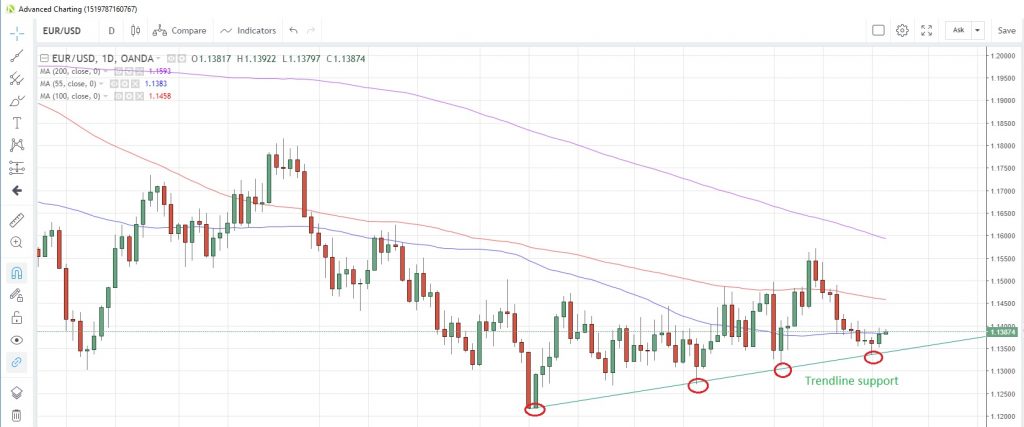Unemployment back at 7-year lows
AUD/USD rose as much as 0.33% to hit an intra-day high of 0.7168 after the economy added more jobs than expected in December. Australia added a net 21,600 jobs, more than the 16,500 economists had expected. A slight negative note was that 24,600 part-time jobs were added with a loss of 3,000 full-time ones, the second monthly decline in a row.
The unemployment rate dipped to 5.0% from 5.1%, equaling the seven-year lows of September and October, though this could be attributed partly to the slide in the participation rate to 65.6% from 65.7%.
In other Australia news, National Australia Bank announced that it was raising variable mortgage rates by 12-16 bps effective January 31. Recall last year in August, Westpac became the first bank to increase variable home loan rates. Commonwealth Bank followed suit in September but NAB kept rates unchanged. It is now catching up with the rest.
The Aussie dollar took this news badly, reversing gains and lurching into negative on the day. AUD/USD is now down 0.22% at 0.7128 and the pair remains below the 100- and 55-day moving averages at 0.7175 and 0.7191, respectively.
AUD/USD Hourly Chart
What can the ECB say about the economy?
The ECB holds its first meeting since it stopped its bond-buying program at the end of last year, and is now focusing on what will be the next move in interest rates. Economic data from Europe has been uninspiring over the last few months, so it would be difficult to see how Mr Draghi could find anything positive to say. We will likely see a reference to heightened risks that the economy is facing.
European Central Bank to Keep Policy Unchanged as Uncertainty Rises
EUR/USD is currently sitting on the 55-day moving average at 1.1383 having found support from the four-point rising trendline drawn from the December 11 low earlier in the week. Slow stochastics momentum appears to be turning bullish ahead of the oversold threshold.
EUR/USD Daily Chart
Trump’s State of the Union address in jeopardy?
US House Speaker Pelosi has said she won’t let President Trump give his State of the Union address in her chamber unless government agencies reopen. She clarified that the invitation to speak on January 29 was in the belief that the US government would not still be shut down. Meantime, Trump needs to find a new venue, unless there is a dramatic development in the standoff. The address has been postponed before. The most recent case was in 1986 when Ronald Reagan’s address was postponed after the Challenger space shuttle exploded after takeoff on January 28. The address has never so far clashed with a US government shutdown.
Flash PMIs give a glimpse of the 2019 economy
The first PMI data for January from Markit are released today, with flash numbers from Germany, Europe and the US. Surveys for Germany and the US are anticipating softer numbers, while the forecast for the Euro-zone is for an unchanged reading.
The full MarketPulse data calendar can be viewed at https://www.marketpulse.com/economic-events/
Content is for general information purposes only. It is not investment advice or a solution to buy or sell securities. Opinions are the authors; not necessarily that of OANDA Business Information & Services, Inc. or any of its affiliates, subsidiaries, officers or directors. If you would like to reproduce or redistribute any of the content found on MarketPulse, an award winning forex, commodities and global indices analysis and news site service produced by OANDA Business Information & Services, Inc., please access the RSS feed or contact us at info@marketpulse.com. Visit https://www.marketpulse.com/ to find out more about the beat of the global markets. © 2023 OANDA Business Information & Services Inc.





